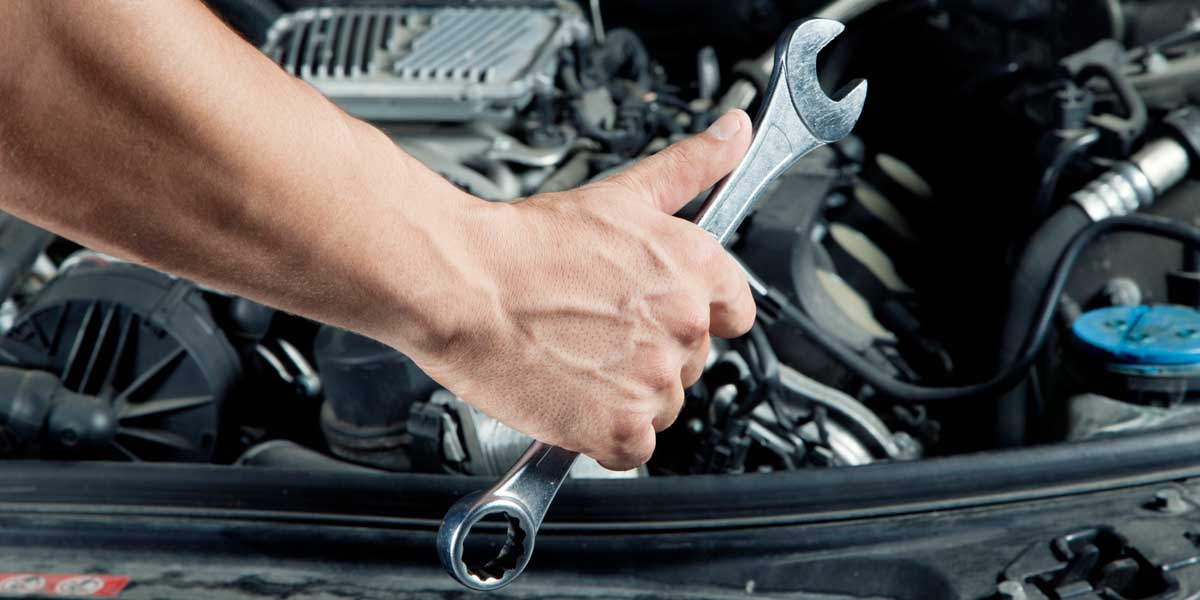All Categories
Featured
When your automobile calls for replacements or fixings, one of one of the most important choices you'll need to make is whether to utilize Original Tools Producer (OEM) components or aftermarket components. Both choices come with their very own benefits and disadvantages, and picking the ideal one can considerably affect the efficiency, long life, and price of your lorry fixing. Below's a guide to help you make an educated choice in between OEM and aftermarket parts.
![]()
What Are OEM Components? OEM components are made by the exact same maker that produced the initial components in your automobile when it was constructed. These parts are developed particularly for your make and model, guaranteeing an ideal fit and matching the specs of the initial components. For instance, if you have a Ford car, an OEM part would be produced by Ford or a licensed Ford vendor.
Among the major benefits of OEM components is their ensured top quality and compatibility. OEM components are more most likely to operate well and last as long as the original component since they are made to satisfy the manufacturer's specific requirements. In a lot of cases, they feature service warranties that ensure your complete satisfaction. Furthermore, making use of OEM components can help maintain the resale worth of your vehicle given that potential purchasers commonly favor vehicles that have actually been fixed with initial components.
What Are Aftermarket Components? Aftermarket components are produced by third-party manufacturers and are developed to fit a range of automobiles, not simply one certain make or model. These components are typically more economical than OEM parts since they are generated in higher volumes, and the manufacturers don't bear the exact same advancement prices as the initial makers.
While aftermarket components are developed to be compatible with most cars, the top quality can differ depending upon the brand and maker. Some aftermarket components are high-quality and offer similar performance to OEM parts, while others might be made with more affordable materials and might not execute too or last as lengthy.
![]()
Benefits of OEM Components. Guaranteed Top Quality and Fit: Since OEM parts are made by the automobile's manufacturer, they're ensured to fulfill the exact specs of the initial components. This guarantees an accurate fit and ideal efficiency. Guarantee: OEM parts typically come with a maker's service warranty, supplying assurance and security against problems. Resale Worth: Cars repaired with OEM components are usually more eye-catching to buyers, which can help maintain or perhaps increase the resale worth of your automobile. Durability: OEM components are usually built to last as long as the initial components, meaning you may have less issues and replacements in the future. Advantages of Aftermarket Parts. Lower Expense: Aftermarket parts are typically more inexpensive than OEM components, making them an appealing choice for those seeking to conserve cash on repair services. Variety: There is a wider range of aftermarket components available, including upgraded or performance-enhancing choices that may not be readily available in OEM components. This is especially attractive to vehicle fanatics who intend to change their lorry. Accessibility: Aftermarket components are widely available and usually less complicated to find than OEM parts, which can be specifically practical for older cars or hard-to-find components. Advancement: Numerous aftermarket parts are designed with enhancements or included features that enhance the lorry's efficiency or look, such as high-performance brake pads or exhaust systems. Downsides of OEM Parts. Higher Price: OEM parts are generally more costly than aftermarket alternatives, which can be a significant aspect if you're on a budget. Minimal Alternatives: OEM parts might provide fewer options for customization or efficiency upgrades contrasted to aftermarket components. Drawbacks of Aftermarket Components. Inconsistent High quality: Aftermarket parts can differ widely in terms of top quality. Some producers create parts that carry out equally as well as OEM parts, while others might reduce corners to conserve costs. Fitment Issues: While aftermarket components are developed to fit most automobiles, they may not constantly be a specific match for your car, leading to possible compatibility issues. Guarantee Limitations: Aftermarket parts may not include guarantees or may supply limited defense, which could lead to extra costs if the component falls short prematurely. How to Pick In Between OEM and Aftermarket Components. When deciding between OEM and aftermarket parts, there are numerous factors to consider:
Spending plan: If expense is a primary problem, aftermarket components might be the far better alternative as a result of their reduced price. If you can afford it and are worried regarding lasting dependability, OEM parts could be worth the financial investment. Automobile Age and Problem: If you own a more recent automobile that's still under guarantee, making use of OEM components may be the ideal selection to preserve the cars and truck's stability and preserve its resale value. For older automobiles, aftermarket parts can be an economical solution to maintain the automobile operating. Performance and Customization: If you have an interest in improving your automobile's performance or appearance, aftermarket components offer more variety and options for upgrades. Manufacturer Suggestions: Some automobile makers might suggest or need the use of OEM components for specific repair services, particularly for safety-related components like air bags or brake systems. Constantly consult your proprietor's handbook or a specialist technician for assistance. Final thought. Eventually, the choice between OEM and aftermarket components relies on your certain demands, preferences, and budget plan. While OEM components give a guaranteed fit and better, aftermarket components can use price savings and a broader array of alternatives. By thoroughly taking into consideration aspects like expense, lorry age, and desired performance, you can make the very best option for your vehicle repairs, making sure that your car remains in good functioning condition without damaging the bank.

What Are OEM Components? OEM components are made by the exact same maker that produced the initial components in your automobile when it was constructed. These parts are developed particularly for your make and model, guaranteeing an ideal fit and matching the specs of the initial components. For instance, if you have a Ford car, an OEM part would be produced by Ford or a licensed Ford vendor.
Among the major benefits of OEM components is their ensured top quality and compatibility. OEM components are more most likely to operate well and last as long as the original component since they are made to satisfy the manufacturer's specific requirements. In a lot of cases, they feature service warranties that ensure your complete satisfaction. Furthermore, making use of OEM components can help maintain the resale worth of your vehicle given that potential purchasers commonly favor vehicles that have actually been fixed with initial components.
What Are Aftermarket Components? Aftermarket components are produced by third-party manufacturers and are developed to fit a range of automobiles, not simply one certain make or model. These components are typically more economical than OEM parts since they are generated in higher volumes, and the manufacturers don't bear the exact same advancement prices as the initial makers.
While aftermarket components are developed to be compatible with most cars, the top quality can differ depending upon the brand and maker. Some aftermarket components are high-quality and offer similar performance to OEM parts, while others might be made with more affordable materials and might not execute too or last as lengthy.

Benefits of OEM Components. Guaranteed Top Quality and Fit: Since OEM parts are made by the automobile's manufacturer, they're ensured to fulfill the exact specs of the initial components. This guarantees an accurate fit and ideal efficiency. Guarantee: OEM parts typically come with a maker's service warranty, supplying assurance and security against problems. Resale Worth: Cars repaired with OEM components are usually more eye-catching to buyers, which can help maintain or perhaps increase the resale worth of your automobile. Durability: OEM components are usually built to last as long as the initial components, meaning you may have less issues and replacements in the future. Advantages of Aftermarket Parts. Lower Expense: Aftermarket parts are typically more inexpensive than OEM components, making them an appealing choice for those seeking to conserve cash on repair services. Variety: There is a wider range of aftermarket components available, including upgraded or performance-enhancing choices that may not be readily available in OEM components. This is especially attractive to vehicle fanatics who intend to change their lorry. Accessibility: Aftermarket components are widely available and usually less complicated to find than OEM parts, which can be specifically practical for older cars or hard-to-find components. Advancement: Numerous aftermarket parts are designed with enhancements or included features that enhance the lorry's efficiency or look, such as high-performance brake pads or exhaust systems. Downsides of OEM Parts. Higher Price: OEM parts are generally more costly than aftermarket alternatives, which can be a significant aspect if you're on a budget. Minimal Alternatives: OEM parts might provide fewer options for customization or efficiency upgrades contrasted to aftermarket components. Drawbacks of Aftermarket Components. Inconsistent High quality: Aftermarket parts can differ widely in terms of top quality. Some producers create parts that carry out equally as well as OEM parts, while others might reduce corners to conserve costs. Fitment Issues: While aftermarket components are developed to fit most automobiles, they may not constantly be a specific match for your car, leading to possible compatibility issues. Guarantee Limitations: Aftermarket parts may not include guarantees or may supply limited defense, which could lead to extra costs if the component falls short prematurely. How to Pick In Between OEM and Aftermarket Components. When deciding between OEM and aftermarket parts, there are numerous factors to consider:
Spending plan: If expense is a primary problem, aftermarket components might be the far better alternative as a result of their reduced price. If you can afford it and are worried regarding lasting dependability, OEM parts could be worth the financial investment. Automobile Age and Problem: If you own a more recent automobile that's still under guarantee, making use of OEM components may be the ideal selection to preserve the cars and truck's stability and preserve its resale value. For older automobiles, aftermarket parts can be an economical solution to maintain the automobile operating. Performance and Customization: If you have an interest in improving your automobile's performance or appearance, aftermarket components offer more variety and options for upgrades. Manufacturer Suggestions: Some automobile makers might suggest or need the use of OEM components for specific repair services, particularly for safety-related components like air bags or brake systems. Constantly consult your proprietor's handbook or a specialist technician for assistance. Final thought. Eventually, the choice between OEM and aftermarket components relies on your certain demands, preferences, and budget plan. While OEM components give a guaranteed fit and better, aftermarket components can use price savings and a broader array of alternatives. By thoroughly taking into consideration aspects like expense, lorry age, and desired performance, you can make the very best option for your vehicle repairs, making sure that your car remains in good functioning condition without damaging the bank.
Latest Posts
Uncover the Montclare Expertise - Reliable Auto Service
Published Apr 19, 25
2 min read
Get to Know the Certified Mechanics Behind Montclare Auto Repair - Here to Serve You
Published Apr 19, 25
2 min read
NAPA AutoCare: Reliable Repairs Supported by the NAPA Standard
Published Apr 19, 25
2 min read
More
Latest Posts
Uncover the Montclare Expertise - Reliable Auto Service
Published Apr 19, 25
2 min read
Get to Know the Certified Mechanics Behind Montclare Auto Repair - Here to Serve You
Published Apr 19, 25
2 min read
NAPA AutoCare: Reliable Repairs Supported by the NAPA Standard
Published Apr 19, 25
2 min read